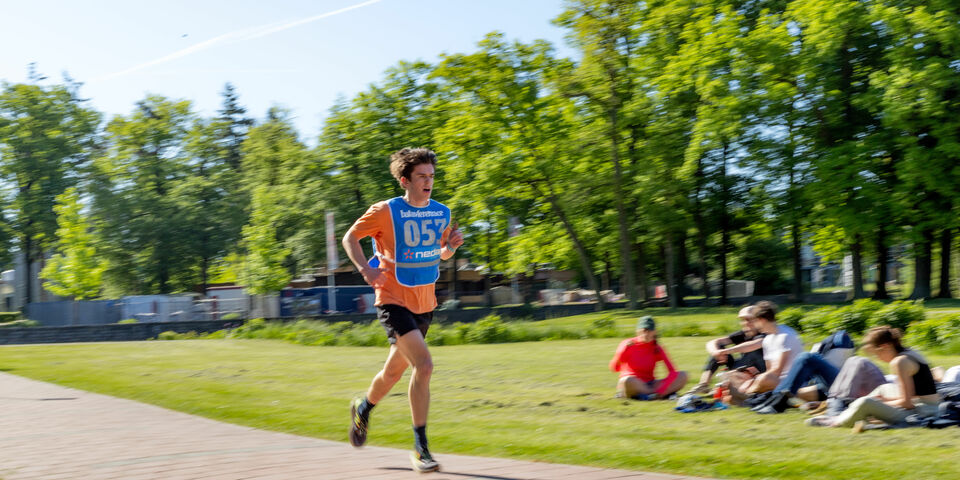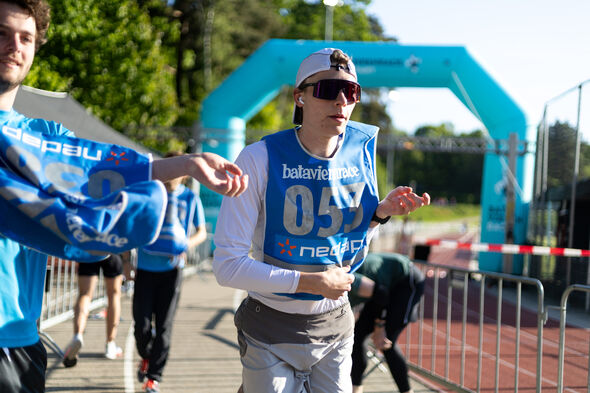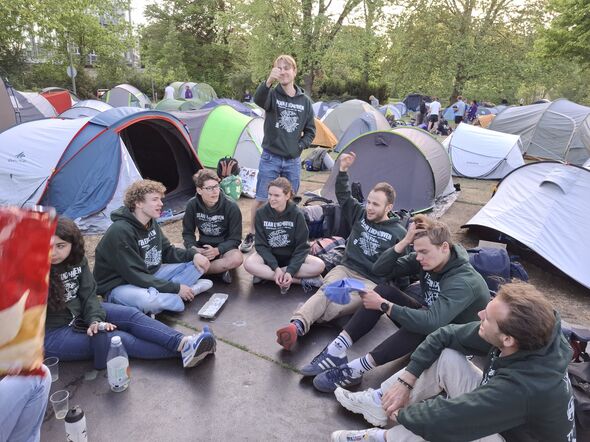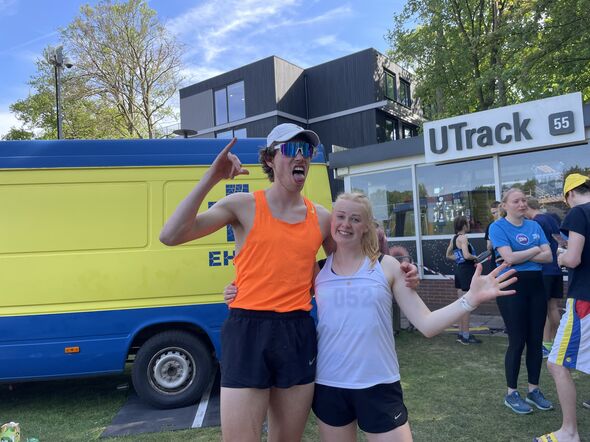Eindhoven wins Batavierenrace in thrilling final stage
By strategically deploying its strongest runner, the Eindhoven university team managed to win the alternative Batavierenrace on Saturday. “A significant achievement,” says team leader Lorens Niehof of athletics association Asterix. “Eindhoven only won once before, in 2003. This year, it was a close race right until the final stage.”
For Asterix members and Batavierenrace enthusiasts, the past few years have been a rollercoaster ride. Last year, the Eindhoven university team (made up of TU/e and Fontys students) achieved the most unlucky of results, finishing in fourth place. This year, the Batavierenrace – an annual event since 1973 – wasn’t going to take place due to a lack of board members. But the race went ahead anyway, in a modified form, and was even won by Eindhoven.
Asterix, in collaboration with the Student Sports Center, sent two teams of thirty people, a performance team and a recreational team. The latter finished thirteenth out of 59 participants.
Bata saved
The Batavierenrace is known as the world’s largest relay race, starting in Nijmegen and ending in Enschede. The race lasts all night long. According to Asterix member Niehof, arranging buses to get the runners to the right starting points is somewhat of a logistical nightmare. This is the task of the participating teams, one he doesn’t mind in itself.
However, organizing the entire Batavierenrace requires a year of dedication from a full-time board composed of a staggering ten people. “That was problematic because of the slow-progress penalty looming for anyone taking longer to complete their studies.”
But then there was Tijmen Bartels, known in the local press as ‘the man who saved the Bata’. Niehof explains how this student – the only remaining member of the previous board – was able to pull this off. “He realized that the most difficult part of the organization was arranging the permits. Road closures, police deployment at night, all very complicated. But if you run five-kilometer laps on the Twente University campus, you don’t need any of that. And the format remained intact: a 20-hour relay race.”
318 kilometers in 20 hours
Niehof put together the performance team. “I enjoy seeing Eindhoven and Asterix win competitions. I found the Bata very interesting because of the new format.” In the original editions (Niehof ran twice), the distance was 175 kilometers. He calculated that he could put together a team that could easily run 300 kilometers in 20 hours. And that’s what happened. “We ran 318 kilometers with the performance team, which averages out to 10.45 miles per hour.”
The team leader decided that some of the members would run more than once. “I myself ran twice at night and once in the afternoon. In between, I tried to sleep for three hours in a tent. One thing the experience taught me is that I shouldn’t forget my earplugs next year.” Lucas Linssen and Piotr Trzebinski were also among the ones that ran at least three stages.
Without a doubt, however, the MVP was Tim de Wild. By the afternoon, it already had become clear that Delft would be the team to beat to get first prize. It was decided, therefore, to save the strongest runner for the final stage. Every team participates in this stage, but for Delft and Eindhoven, it was decisive.
Final stage
After twenty hours, the performance teams from Delft and Eindhoven had both completed 66 laps. Tim de Wild, a mechanical engineering student and member of student team Polar, set a lap record, running 2 minutes and 41 seconds faster than the runner from Delft. The proud team leader called it a “significant achievement” that they’ll continue to enjoy for a long time to come. The huge trophy will be displayed in the Asterix canteen at sports park the Hondsheuvels.





Discussion